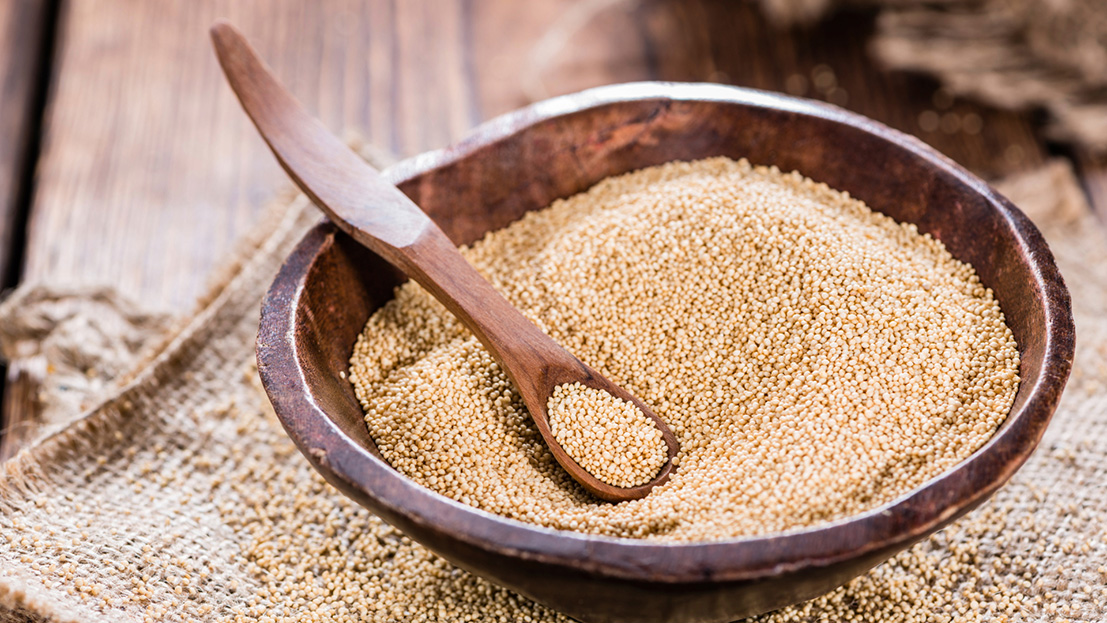
- Fun fact: Amaranth is a pseudo cereal grain, meaning it is not a true cereal grain, but a seed. Pseudo cereals such as amaranth, quinoa and buckwheat are classified in the same category as grains due to their similar nutrient content and preparation techniques.
- Amaranth is part of the Amaranthaceae botanical family which also includes beet, chard, quinoa, spinach, sugar beet and Swiss chard.
- Amaranth is naturally gluten-free and an outstanding powerhouse, nutrient rich food, making it a great choice for those on a gluten-free diet.
Nutrition
- Amaranth is an excellent source of fiber, iron, magnesium, phosphorus, manganese and a good source of calcium, zinc, selenium, vitamin B6 and folate.
- Fiber supports a healthy digestive system by preventing constipation.
- Iron is required for growth and development and is needed to make red blood cells which carry oxygen throughout our bodies.
- Magnesium is needed to regulate muscle and nerve function, blood pressure and blood sugar levels.
- Phosphorus assists the body in creating energy and supports formation of bones and teeth.
- Manganese helps the body to form connective tissue, bones, sex hormones and blood clotting factors.
- Calcium helps keep teeth and bones strong and is used by nerves to carry messages between the brain and body.
- Zinc helps the immune system fight off viruses and bacteria and assists with wound healing.
- Selenium plays a significant role in thyroid health, creation of DNA and reproduction.
- Vitamin B6 assists with protein metabolism and is important in brain development during pregnancy and supports immune function.
- Folate is required to make DNA and other genetic material and protects against birth defects during pregnancy.
How to Purchase, Prepare, and Store
- Amaranth is available for purchase year round in grocery stores. Select packages of amaranth that are tightly sealed. Amaranth may also be available in the bulk section of a grocery store. Avoid grains that have a musty or oily scent as these are beyond their peak for freshness.
- Amaranth greens are also edible, but may be harder to find in grocery stores.
- Store the amaranth in an airtight container for up to six months in a dry, cool place such as your pantry or in the freezer for up to one year.
- Prepare amaranth by adding amaranth to water, bring to a boil, reduce heat to simmer and cook until water is absorbed and desired consistency is reached. Use a 1:1 (1 part amaranth: 1 part water) for a firm texture, use a 1:2 for a softer texture and use a 1:3 to achieve a porridge consistency.
- Substitute cooked amaranth in your favorite grain dishes and use as a flour in baked goods recipes.
Nutrition Facts
1/2 cup cooked amaranth
- Calories: 125.5
- Protein: 4.6 g
- Fat: 1.9 g
- Carbohydrate: 23 g
- Fiber: 2.5 g
- Calcium: 58 mg
- Magnesium: 80 mg
- Potassium: 166 mg
- Folate: 27.0 µg
Source: fdc.nal.usda.gov
Recipes
Request an Appointment
